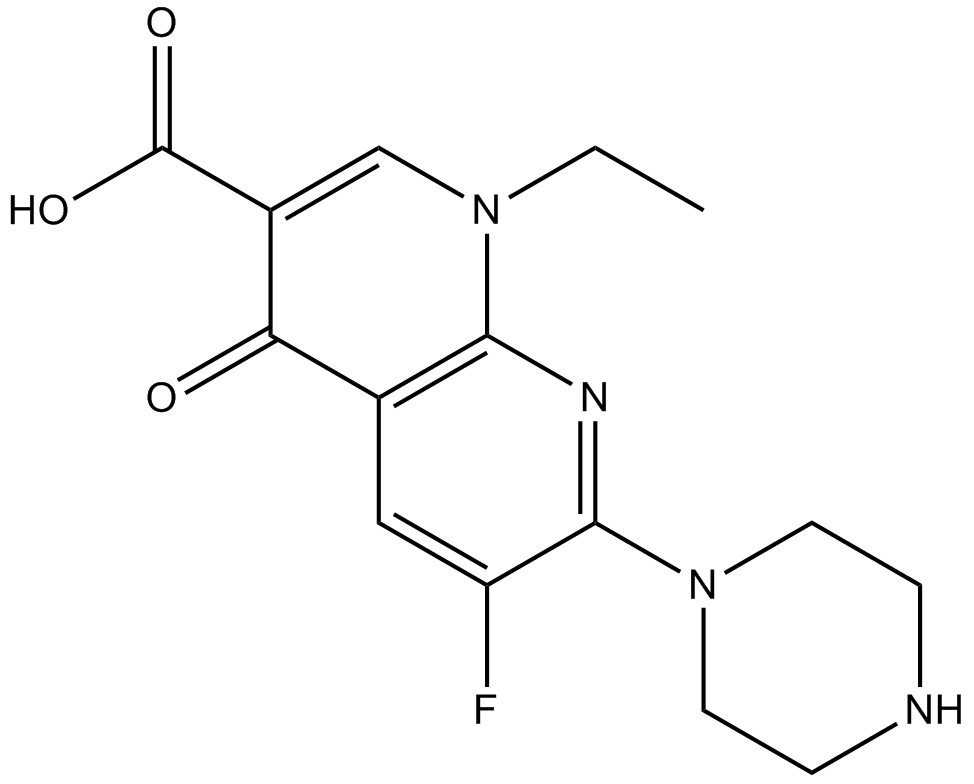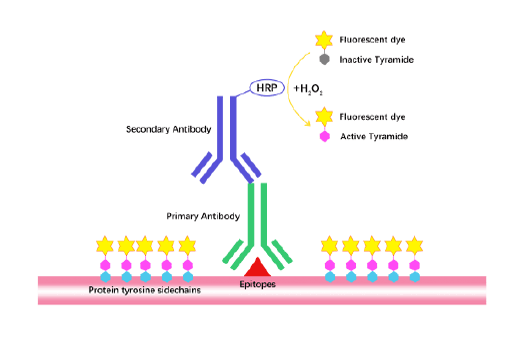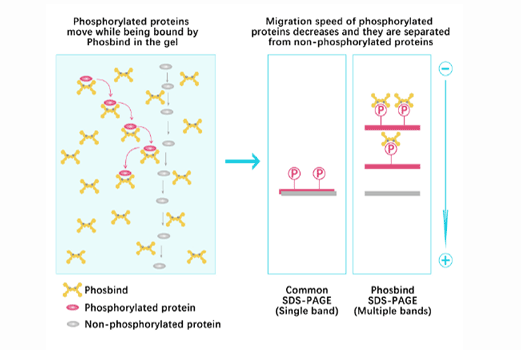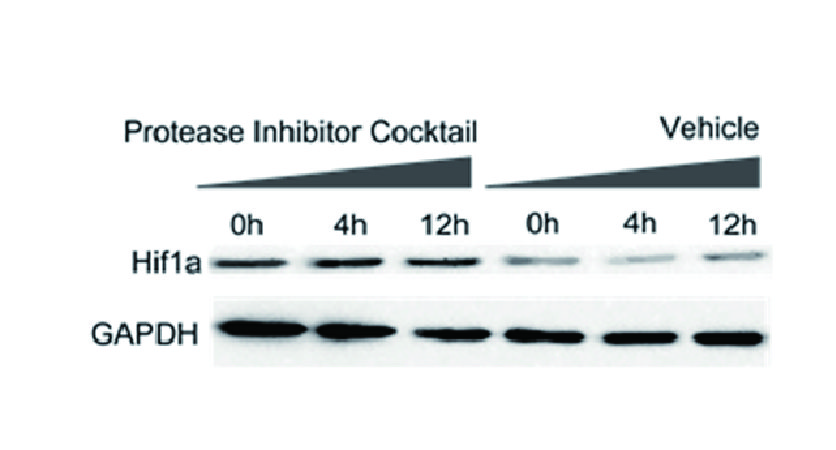Enoxacin (Penetrex)
Enoxacin is a quinolone antibacteral agent. Acts on DNA gyrase.
| Physical Appearance | A solid |
| Storage | Store at -20°C |
| M.Wt | 320.32 |
| Cas No. | 74011-58-8 |
| Formula | C15H17FN4O3 |
| Solubility | insoluble in H2O; insoluble in EtOH; ≥18.4 mg/mL in DMSO |
| Chemical Name | 1-ethyl-6-fluoro-4-oxo-7-piperazin-1-yl-1,8-naphthyridine-3-carboxylic acid |
| SDF | Download SDF |
| Canonical SMILES | CCN(C=C(C(O)=O)C(c1c2)=O)c1nc(N1CCNCC1)c2F |
| Shipping Condition | Small Molecules with Blue Ice, Modified Nucleotides with Dry Ice. |
| General tips | We do not recommend long-term storage for the solution, please use it up soon. |
| Cell experiment [1]: | |
|
Cell lines |
Human prostate cancer cell lines DU145, LNCaP, VCaP and PC-3 |
|
Preparation method |
The solubility of this compound in DMSO is ≥18.4 mg/mL. General tips for obtaining a higher concentration: Please warm the tube at 37 ℃ for 10 minutes and/or shake it in the ultrasonic bath for a while. Stock solution can be stored below -20℃ for several months. |
|
Reacting condition |
40 μg/ml |
|
Applications |
Enoxacin could reduce cell viability, induce apoptosis, cause cell cycle arrest, and inhibit the invasiveness of cell lines. Enoxacin was also effective in restoring the overall expression of miRNA. |
|
References: [1]. Sousa E, Graça I, Baptista T, Vieira FQ, Palmeira C, Henrique R, Jerónimo C. Enoxacin inhibits growth of prostate cancer cells and effectively restores microRNA processing. Epigenetics. 2013 May;8(5):548-58. doi: 10.4161/epi.24519. Epub 2013 Apr 17. PubMed PMID: 23644875; PubMed Central PMCID: PMC3741225. |
|
Quality Control & MSDS
- View current batch:
Chemical structure









